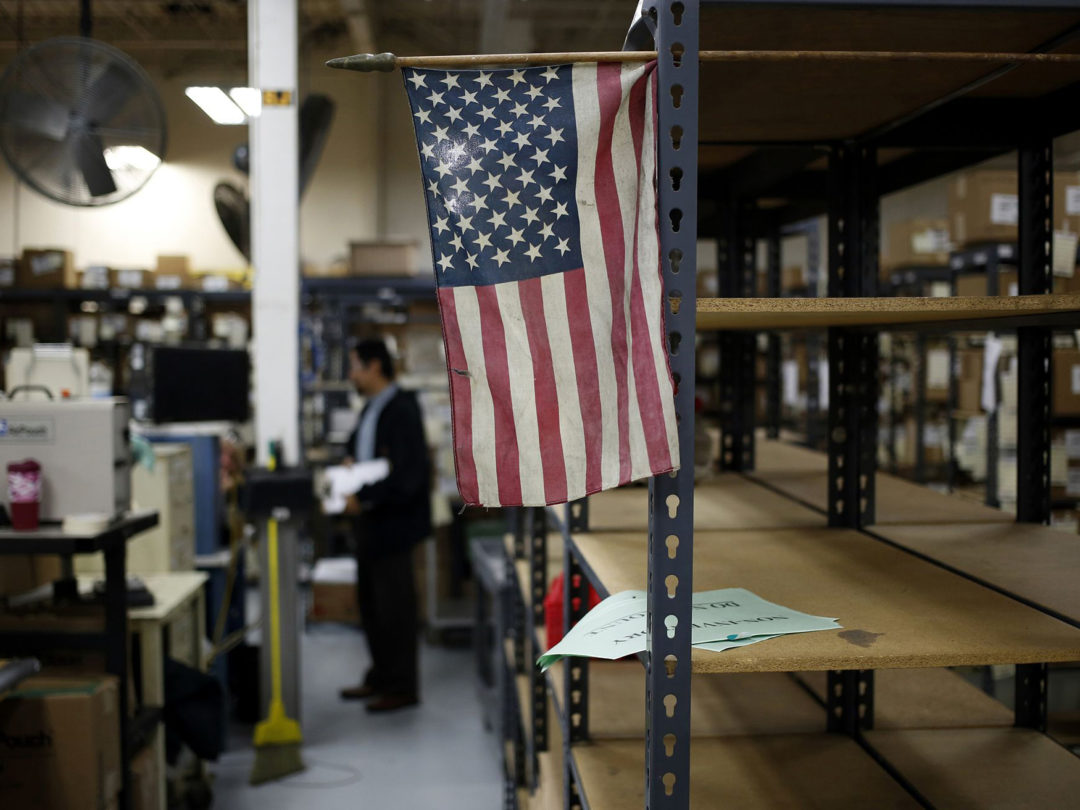
Recently, there has been much discussion about bringing jobs back to America, by pursuing self-sufficiency in manufacturing. The goal carries numerous benefits for the country.
Manufacturing internally allows for the increased use of eco-friendly shipping materials, such as the plastic jerrican, poly drum, totes and shipping barrels. Such products are UN-certified and in compliance with 49 CFR (the U.S. code governing hazardous materials transportation), International Civil Aviation Organization (ICAO), and International Maritime Organization (IMO) regulations. The materials can help to reduce climate change by cutting back on the carbon footprint of the manufacturing and shipping industries.
In addition to promoting environmental consciousness, domestic manufacturing encourages economic growth and boosts job availability for workers who may be displaced due to the coronavirus pandemic. Multiple industry sub-sectors offer a wide variety of employment opportunities, including apparel, food, chemical, machinery, furniture and transportation equipment.
Manufacturing jobs pay roughly 12% more than other U.S. industries, providing lucrative options for a country that’s experiencing high unemployment due to the global pandemic. In fact, an uptick in manufacturing opportunities was already creating jobs for Americans in 2019. In September of that year, the Bureau of Labor Statistics reported 469,000 job openings and 362,000 new hires in the industry.
In a post-pandemic world, where unemployment rates reached 10.2% in July 2020, a revitalized manufacturing sector can provide much-needed jobs to workers in hard-hit sectors, including hospitality, construction and retail. In some instances, these industries aren’t expected to recover for a minimum of five years, making domestic manufacturing a plausible replacement.
The U.S. can also benefit by replacing international suppliers with domestic ones. While it might have been necessary to outsource cheaper parts in the past, domestic options at a similar price level allow American manufacturers to support a national supplier base. Investing in Americans promotes economic growth.
Self-Sufficiency in a Global Crisis
With most of the world heavily reliant on imports from China, nations are seeking ways to become self-sufficient by manufacturing their own goods. The personal protective equipment (PPE) business has become vitally important to the U.S., with the pandemic causing an unanticipated spike in demand for PPE and ventilators on a national scale. The demand for masks and other critical items will likely remain high in future, with organizations and individuals likely to stockpile them in preparation for another event like the current pandemic.
Rising trade with China has been cited as a reason for the decline in U.S. manufacturing in the 2000s, resulting in the loss of about a quarter of domestic jobs in that industry. With the pandemic causing new tensions between the U.S. and China, it follows that American manufacturing must continue to gain momentum to increase self-sufficiency.
Technological Advances
For the U.S. to compete with China’s low manufacturing costs, it must increase the pace of automation. American workers are subject to minimum wage requirements, at a rate that’s significantly higher than what workers in developing countries receive for the same work. The U.S. federal minimum wage is currently $7.25 an hour. By comparison, the average hourly wage for a factory worker in Vietnam is around $4.28.
The U.S. manufacturing sector is hampered by a lack of training for available jobs. Robotics systems and automated services have taken over simple, repetitive tasks. So while there’s a strong demand for workers in American manufacturing, they require more education to operate the machines and move into management positions. They’re needed for the complex tasks that machines can’t handle, such as problem-solving, analytics, quality control and equipment repair.
For the U.S. to be successful in improving the future of domestic manufacturing, it needs to maximize the amount of automation being used in production. An estimated 60% of manufacturing tasks have the potential to be automated. Investment is needed now to address the cost of technology installations, so that the U.S. can compete with China and other countries whose prices are naturally lower.
Growth in manufacturing helps the economy in many ways, with every dollar spent contributing $1.89 to other industries. When America invests in manufacturing, it bolsters other sectors by default, along with the economy at large.
The U.S. stands to reap multiple benefits from turning its manufacturing focus inward, rather than relying on imports to remain sufficiently stocked. Growth in domestic production creates jobs for skilled workers, and has a positive impact on other industries such as health care, retail and transportation.
Cory Levins is director of business development at Air Sea Containers.







